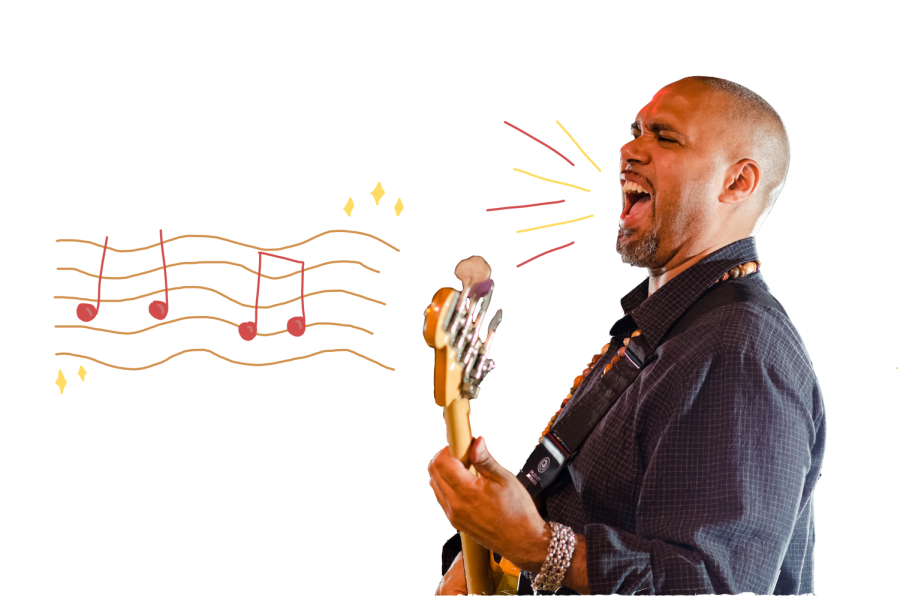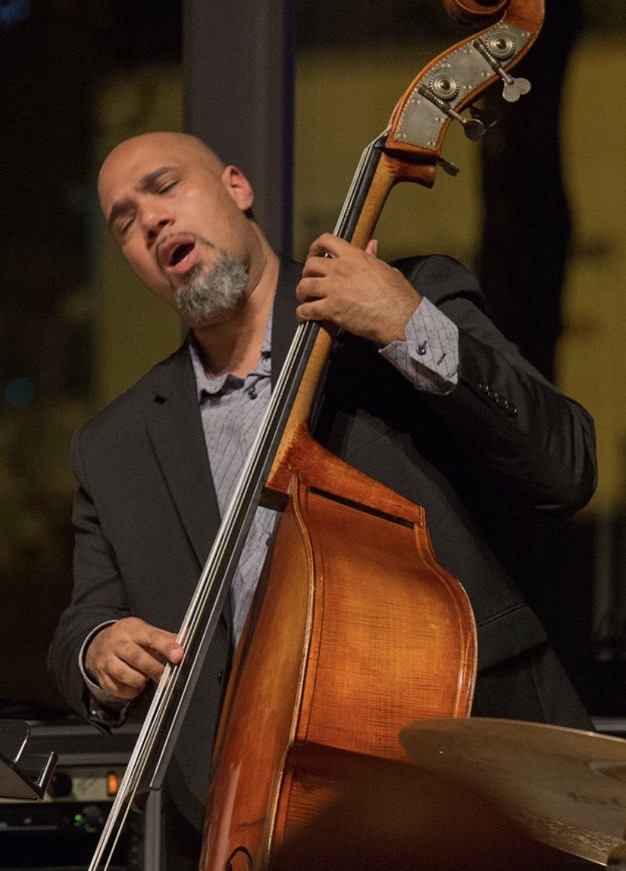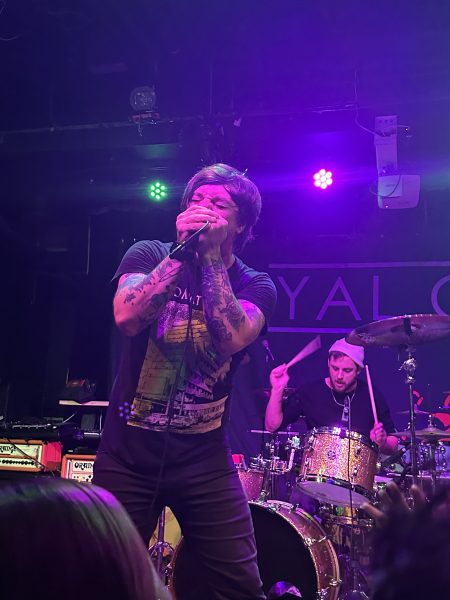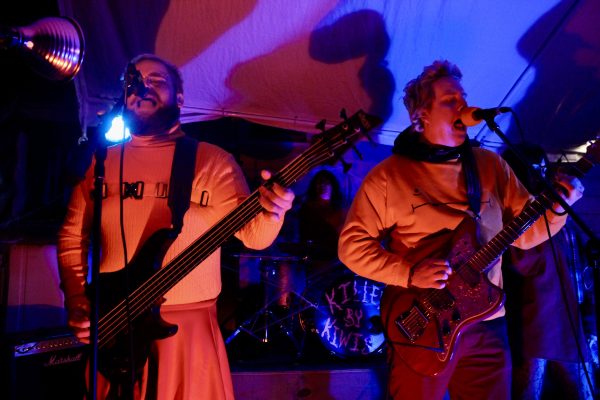Professors got rhythm
Header: Professors got rhythm Before they were here: Hamline’s teacher musicians Deck: Many of Hamline’s professors engage in artistic pursuits outside of Hamline, including music.
Photo courtesy of Jeff Bailey
Jef Bailey jams on both the acoustic and electric bass.
February 24, 2021
Hamline University is known for its robust arts program, and has a strong community from indie musicians, to the orchestra and wind ensemble, to the musical actors. Especially among Hamline teachers, there are many faculty members who have prestigious and respectable backgrounds as career musicians.
“I started playing the drums when I was seven years old. My stepfather brought drums home one day and I started to play and he just would sort of watch me and let me explore. And it took, I guess. I would start to, just as I was leaving high school, start to begin to start identifying with other drummers and jazz music and rock and roll in particular,” Davu Seru said.
Seru, a Hamline faculty member, teaches courses in first-year writing, English and literature, and is an interdisciplinary scholar specializing in African-American literary and cultural studies.
Seru mentioned studying drummers such as Max Roach, Albert Jones and Mitch Mitchell, as well as jazz icons such as Monk Bird, Charlie Parker and Miles Davis. Seru also talked about how musicians improve themselves by imitating their betters, until imitation can become innovation.
“It’s how you get better unless you follow an academic track. You really follow recordings and icons, icons. That’s the word for people that are great symbols for you to model yourself after. Yeah, absolutely. I mean, I think that’s definitely a me where you get that teacher aspect from,” said Seru.
Professor Jeff Bailey is director of the certificate in music production program at Hamline University, and has extensive experience as a composer and touring musician.
“I’m a St. Paul kid. I was born and raised and was a band when I was much younger. I played trumpet and baritone horn and was completely enthralled with that, the culture of it and the playing and Tom Bulwark that all resonated with me,” Bailey said.
Bailey is also into art activism, and believes that music production and composing can truly become a space for anyone.
“So many institutions now are seeing that experience painting and dancing and this whole collaborative idea of how, the painting is the main point, but let’s have music from that period. And as you go through, you know, Van Gogh or whoever, I know my, my friend who is a curator part of the curating team in Toronto, and they’re doing a lot of African and Black American art and to have supportive material that is in line with those periods gives you this other sense of cultural identity at places that picture in a timeframe,” Bailey said.Bailey got his start in musical education but found that the classic canon emphasized in the curriculum was too restrictive for the creativity needed in jazz music.
“Somewhere in there as I started attending college, I realized I didn’t have enough brain bandwidth to do non-music homework and music homework. So, I jumped in with both feet and started applying for the University of Minnesota School of Music and ran into all sorts of problems there, institutional kind of cultural racism that was rampant,” Bailey said.
Through the certificate in music production program, Bailey said that he wants to see all sorts of students come together, no matter their areas of musical interest. He hopes to see more inclusion and expansion within the musical scene.






